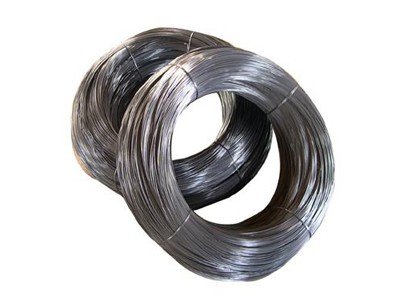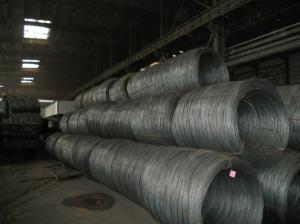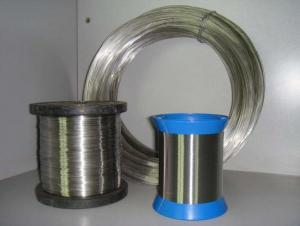AISI304 Stainless Steel Wire
- Loading Port:
- China Main Port
- Payment Terms:
- TT or LC
- Min Order Qty:
- 1 Ton m.t.
- Supply Capability:
- 2000 Tons Per Month m.t./month
OKorder Service Pledge
OKorder Financial Service
You Might Also Like
304 Stainless Steel Wire
1.Grade: SS 200,300,400 series
2.Dia: 0.1mm-100mm
3.Length:500m-2000m/Reel
4.Surface: Bright
5.Certificate: Fortune 500, SGS, ISO 9001:2008
6.Test: Salt Spray over200 hours
7.MOQ:500kg
8.Delivery: Within 20 days
9.Packing: Reel, wooden box or according to your requirement
10.Payment terms: China Main Port or CIF ANY PORT
11. Application: Tie wire, pins, lashing, forming wire, filters, gaskets, elevators, safety wire, shaped and flat wire, conveyors, jewelry, springs, brush welding, electrical, wire line, craft and many more applications.
|
Main Grades |
C % |
Si % |
S % |
P % |
Mn % |
Cr % |
Ni % |
Mo % |
Cu % |
|
S30400 |
<0.08 |
<0.75 |
<0.015 |
<0.045 |
<2 |
18.05-19 |
8.01--8.25 |
<0.6 | |
|
304H |
0.04-0.1 |
<0.75 |
<0.015 |
<0.045 |
<2 |
18.05-19 |
8.01--8.25 |
<0.5 | |
|
304Hc1 |
0.03-0.05 |
<0.75 |
<0.015 |
<0.045 |
<2 |
18.05-19 |
8.01-8.25 |
1.2-1.6 | |
|
304Hc |
0.03-0.05 |
<0.75 |
<0.015 |
<0.045 |
<2 |
18.05-19 |
8.01--8.25 |
2-3 | |
|
304Hc3 |
0.03-0.05 |
<0.75 |
<0.015 |
<0.045 |
<2 |
18.05-19 |
8.01--8.25 |
3-3.5 | |
|
304ES |
<0.08 |
<0.75 |
<0.015 |
<0.045 |
2-3 |
16.05-17 |
6.01-6.3 |
1.5-3 | |
|
304M2 |
0.05-0.08 |
<0.75 |
<0.015 |
<0.045 |
2-3 |
18-18.5 |
7-8.1 |
<0.6 | |
|
304M3 |
0.05-0.08 |
<0.75 |
<0.015 |
<0.045 |
2-3 |
18-18.5 |
8.01-8.25 |
<0.6 | |
|
304L |
<0.035 |
<0.75 |
<0.015 |
<0.045 |
<2 |
18.05-19 |
8.01--8.25 |
<0.6 | |
|
321 |
0.04-0.08 |
<0.75 |
<0.015 |
<0.045 |
<2 |
17-18 |
8.01--8.25 |
||
|
316L |
<0.035 |
<0.75 |
<0.015 |
<0.045 |
<2 |
16.05-17 |
10.01--10.35 |
2.01-2.2 |
<1 |
|
316 |
0.04-0.08 |
<0.75 |
<0.015 |
<0.045 |
<2 |
16.05-17 |
10.01--10.35 |
2.01-2.2 |
<1 |
|
316LCu |
<0.035 |
<0.75 |
<0.05 |
<0.045 |
<2 |
16-17 |
10-10.5 |
2-2.25 |
|
|
ER316L |
<0.04 |
0.65 |
<0.03 |
<0.04 |
1.0-2.5 |
18-20 |
11.1-12 |
||
|
201CU |
<0.08 |
<0.75 |
<0.015 |
<0.045 |
8-9.5 |
13.05-14 |
4.01-4.25 |
2-3 | |
|
D667 |
<0.08 |
<0.75 |
<0.015 |
<0.045 |
13-14 |
13-14 |
0.7-1.5 |
1.5-3 | |
|
D665B |
<0.08 |
<0.75 |
<0.015 |
<0.045 |
14-16 |
10.05-11 |
<1.2 |
0.5--1.5 | |
|
202B |
0.1-0.15 |
<0.75 |
<0.015 |
<0.045 |
9-10 |
17.05-18 |
4.5-5 |
||
|
D669 |
0.08-1.0 |
<0.75 |
<0.015 |
<0.045 |
14.5-16 |
11-12 |
<1.2 |
0.5-1.5 | |
|
200CU |
<0.08 |
<0.75 |
<0.015 |
<0.045 |
11-12 |
13-14 |
1-2 |
1.5-2.5 |


- Q: What are the different types of stainless steel wire rope terminations available?
- There are several types of stainless steel wire rope terminations available, each offering unique advantages and suitability for different applications. Some common types include: 1. Wire Rope Clips: Also known as wire rope clamps, these terminations comprise a U-bolt, saddle, and nuts. They are easy to install and provide a strong and secure connection. Wire rope clips are commonly used for light to medium-duty applications. 2. Swage Fittings: Swaging involves permanently attaching a fitting to the wire rope by compressing it using specialized tools. Swage fittings provide a clean and streamlined termination, ensuring excellent strength and durability. They are often used in heavy-duty applications and critical load-bearing situations. 3. Thimbles: Thimbles are metal sleeves that are inserted into the eye or loop of the wire rope to protect it from abrasion and wear. They help maintain the rope's shape and enhance its longevity. Thimbles can be used in conjunction with wire rope clips or swage fittings for added reinforcement. 4. Turnbuckles: Turnbuckles are adjustable fittings consisting of two threaded eye bolts connected by a metal body. They allow for easy tensioning and adjustment of the wire rope, making them ideal for applications that require periodic tightening or fine-tuning. 5. Nicopress Sleeves: Nicopress sleeves, also known as compression sleeves, are made of aluminum or copper and are used with a special tool to compress and secure the wire rope. They provide a reliable termination for light to medium-duty applications and are commonly used in marine and architectural applications. It's important to select the appropriate termination based on the specific requirements of your application, such as load capacity, environmental conditions, and desired level of permanence. Consulting with a knowledgeable supplier or engineer can help ensure the right choice for your stainless steel wire rope termination needs.
- Q: What are the different types of stainless steel wire rope pulleys?
- Various industries commonly utilize several different types of stainless steel wire rope pulleys. 1. Single Sheave Pulleys: These pulleys have one rotating wheel or sheave on an axle. They are suitable for simple lifting and pulling tasks that require only one line of wire rope. 2. Double Sheave Pulleys: These pulleys have two wheels or sheaves rotating on a shared axle. They evenly distribute the load between two wire rope lines, making them ideal for applications that require increased lifting capacity or balance. 3. Swivel Eye Pulleys: These pulleys have a swivel eye attachment, allowing them to freely rotate in any direction. They are particularly useful when the pulley needs to change direction or follow the load's movement. 4. Fixed Eye Pulleys: These pulleys have a fixed eye attachment and cannot rotate freely. They are commonly used when the load's direction remains constant and no rotation is necessary. 5. Adjustable Pulleys: These pulleys have a mechanism that enables the adjustment of the distance between the sheaves. This feature is beneficial in applications where the wire rope's length needs to be modified to accommodate different loads or lifting heights. 6. Heavy-Duty Pulleys: These pulleys are specifically designed to handle heavier loads. They are constructed with larger sheaves and stronger materials, making them suitable for demanding industries like construction, mining, and marine. 7. Stainless Steel Swivel Pulleys: These pulleys are made from stainless steel, offering excellent corrosion resistance and durability. They are commonly used in outdoor or marine environments where exposure to moisture or saltwater can cause rust or degradation. Ultimately, the selection of a stainless steel wire rope pulley depends on the specific application requirements, load capacity, and environmental conditions in which it will be utilized.
- Q: How does stainless steel wire perform in high-stress environments?
- Stainless steel wire is well-known for its exceptional performance in high-stress environments, thanks to its unique composition. With a high percentage of chromium, the wire possesses remarkable corrosion resistance, even in harsh conditions. This resistance guarantees that the wire maintains its structural integrity and strength, even when subjected to immense stress. In high-stress environments, stainless steel wire demonstrates outstanding tensile strength and durability, making it the preferred choice for various applications. Its ability to withstand heavy loads and extreme temperatures makes it ideal for use in industries such as aerospace, automotive, and construction. Whether used for suspension cables, springs, or structural supports, stainless steel wire consistently performs under intense pressure. Moreover, stainless steel wire exhibits high resistance to fatigue, which is crucial in high-stress environments. This means that even with repeated loading and unloading, the wire does not succumb to fatigue failure. Its resilience and ability to maintain its shape and function over time make it a reliable option for critical applications where safety is paramount. Another advantage of stainless steel wire is its resistance to deformation and stretching. Even under substantial stress, the wire retains its shape, ensuring consistent performance. This property is particularly valuable in applications where dimensional stability is crucial, such as in medical devices or precision machinery. In summary, stainless steel wire excels in high-stress environments due to its corrosion resistance, exceptional tensile strength, and resistance to fatigue and deformation. These properties make it a dependable choice for industries where reliability and performance are of utmost importance.
- Q: Can stainless steel wire be used for hanging artwork?
- Certainly, the utilization of stainless steel wire is applicable when it comes to suspending artwork. Stainless steel wire, a versatile and enduring material, is commonly employed in a variety of hanging scenarios, including artwork. Its remarkable strength and resistance to corrosion render it an ideal choice for securely supporting and suspending diverse forms of artwork, such as paintings, frames, and sculptures. Moreover, a protective vinyl sleeve is often applied to stainless steel wire to prevent any potential harm or scratching to the artwork. This particular wire is also obtainable in various thicknesses and strengths, enabling tailored solutions based on the weight and dimensions of the artwork. All in all, stainless steel wire presents a trustworthy and enduring choice for hanging artwork in a manner that is both safe and visually appealing.
- Q: Can stainless steel wire be used for cable railing?
- Yes, stainless steel wire can be used for cable railing. In fact, it is one of the most popular materials used for this purpose. Stainless steel wire offers several advantages for cable railing systems. Firstly, it is highly durable and resistant to corrosion, which makes it suitable for outdoor applications where it may be exposed to different weather conditions. Additionally, stainless steel wire provides a sleek and modern aesthetic, making it a popular choice for contemporary architectural designs. Furthermore, stainless steel wire is strong and can withstand the tension required for cable railing systems, ensuring the safety and stability of the railing. Overall, stainless steel wire is an excellent choice for cable railing due to its durability, aesthetic appeal, and strength.
- Q: Does stainless steel wire have any magnetic properties?
- Yes, stainless steel wire does have magnetic properties. However, the level of magnetism can vary depending on the specific composition of the stainless steel. Stainless steel is an alloy composed mainly of iron, with the addition of various elements such as chromium, nickel, and manganese. The presence of these alloying elements affects the magnetic behavior of the stainless steel. In general, stainless steel is considered to have weak magnetic properties, meaning it is not highly attracted to magnets. However, certain types of stainless steel, such as those with a higher percentage of ferrite or martensite, can exhibit more pronounced magnetic properties.
- Q: Why do stainless steel screws still rust?
- Of course, stainless steel screw film damage is not only the above two reasons, there are many kinds of situations in daily life:1 stainless steel screws, long-term exposure to the soup, vegetables and other organic juice, a chemical reaction occurs into organic acids in water with oxygen under the condition of corrosion of stainless steel screws.2, stainless steel screws in the polluted air encountered condensate, pollution refers to contain a large amount of sulfide or carbon dioxide, water will form sulfuric acid, hydroxide, chemical corrosion of stainless steel screws.
- Q: Can stainless steel wire be used for tie wire applications?
- Stainless steel wire is indeed suitable for tie wire applications. Renowned for its exceptional resistance to corrosion, durability, and strength, stainless steel proves to be an outstanding option for such purposes. Its utilization is widespread in construction, landscaping, and various other industries that necessitate the use of a resilient and enduring tie wire. The rust-resistant nature of stainless steel tie wire empowers it to withstand even the harshest environmental conditions, guaranteeing its reliability and durability. Moreover, the availability of stainless steel wire in diverse sizes and gauges grants the flexibility and customization required to meet specific tie wire needs.
- Q: Can stainless steel wire screens be used for fire protection?
- Yes, stainless steel wire screens can be used for fire protection. Stainless steel has excellent heat resistance and does not readily combust, making it a suitable material for fire protection applications. These screens can be used to prevent the spread of fire by acting as barriers or filters to block sparks, embers, or hot particles from passing through and igniting flammable materials.
- Q: Can stainless steel welding rod replace argon arc welding wire?
- As long as the stainless steel electrode material is the same or similar to the base metal, the electrode coating can be used as stainless steel welding wire.
Send your message to us
AISI304 Stainless Steel Wire
- Loading Port:
- China Main Port
- Payment Terms:
- TT or LC
- Min Order Qty:
- 1 Ton m.t.
- Supply Capability:
- 2000 Tons Per Month m.t./month
OKorder Service Pledge
OKorder Financial Service
Similar products
Hot products
Hot Searches
Related keywords



























